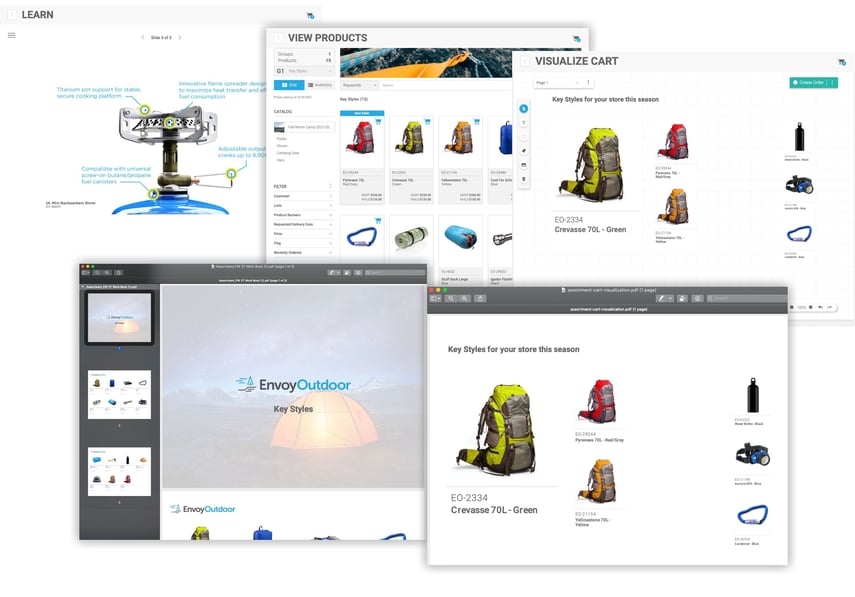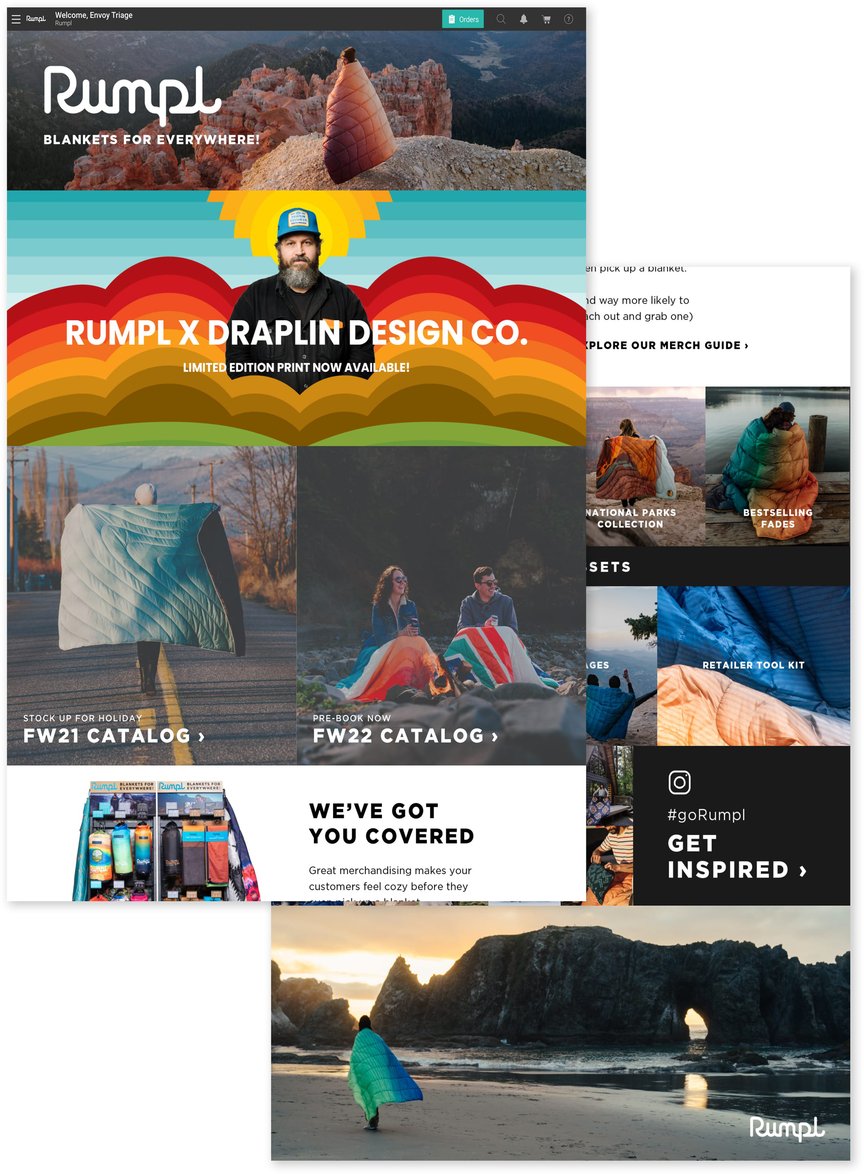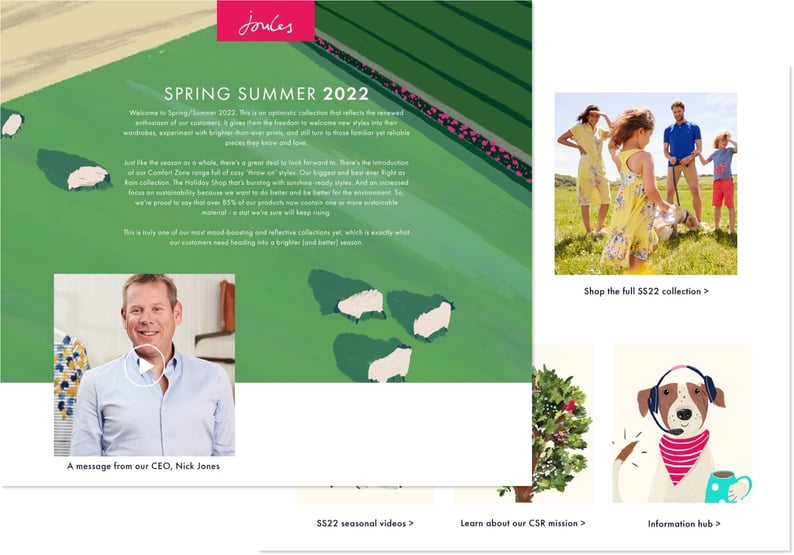2023 is almost here, and you’re likely planning fresh initiatives and opportunities to advance your wholesale B2B channels. It’s a good time to look at what exciting trends are emerging across the B2B landscape, including re-thinking how your B2B systems function, incorporating micro-influencer marketing into your B2B experience, and offering augmented reality experiences to your buyers.
Trend #1: Make it More Like B2C
This isn’t an entirely new trend, but it continues to be extremely relevant. Most retailer’s are calling for a more B2C-like experience froma brand’s B2B, and should remain a key priority for your wholesale strategy.
 This means making sure your wholesale B2B platform has the proper tooling and functionality to deliver that B2C experience. To do this, you need:
This means making sure your wholesale B2B platform has the proper tooling and functionality to deliver that B2C experience. To do this, you need:
- Shopping cart functionality
- A fully shoppable platform
- A 24/7 self-service portal
- Easy follow-ups on abandoned carts and unfinished orders
More and more Millenials and Gen Z’ers are becoming retail buyers, and it’s critical to realize they don’t want to be sold to – they want to be engaged with a genuine experience, driven by personalized content and shared values. These are digital natives, with the expectation that the B2B experience they have at work will mirror the B2C experience they have at home. “We have the best widget for the best price” isn’t enough anymore, and this new generation of buyers will move on to brands that offer the experience they want.
Your marketing and sales teams will also need a few key pieces of functionality in order to create more engaging experiences for these buyers in 2023:
- Access to data, analytics, and insights
- Strong segmentation tools and ways to deliver personalized experiences
- A powerful digital or virtual showroom experience
 Trend #2: Influencer Marketing + User Generated Content
Trend #2: Influencer Marketing + User Generated Content
As consumers ourselves, we’re inundated with influencers and user generated content (UGC) on a daily basis. Whether it’s someone in our personal social feed recommending a product they love, or a social network’s algorithm that delivers influencer content relevant to our known interests, or a peer that invites us into a new digital community, it’s how brands are finding greater reach.
While you can’t put those same kinds of algorithmic tools into your wholesale B2B platform (because it isn’t a social network), you can still harness the power of influencer marketing and UGC inside your B2B.
Fortunately, this increase in attention to influencer marketing comes with a focus on micro influencers. Research shows that niche influencers have the highest engagement rate across all platforms. You can take this learning and apply it to your B2B platform by tapping into key reps and retailers across your B2B landscape.

As you build out your digital showrooms and retailer experiences, you should work with your reps, superusers, retailers, and channel partners as micro-influencers to generate testimonial content in the form of quotes, recommendations, videos, or whatever else you can collaborate on together. Fortunately, since your digital B2B experiences are handcrafted, you can curate this content to harness the power of influencer marketing and UGC as a way to create trust and drive growth, without having to rely on the whims of an algorithm.
Trend #3: Augmented Reality and 3D Models Are Changing The Face Of B2B
As reported by ARtillery Intelligence, there were almost 600 million active AR devices in 2020, and that number is expected to hit 1.73 billion by 2024. It has become clear that augmented reality experiences are more than just a quick fix for issues created by the pandemic. They’re here to stay, and we’re seeing big players enter the field with Amazon delivering an AR try on experience for shoes in their B2C experience.
And again, as we continue to see buyers push for B2B platforms that deliver a B2C-like experience, the demand for AR inside B2B is rising. Wolverine Worldwide recently built virtual experiences and delivered augmented reality showrooms to their buyers at their global sales conference in 2022.
3D MODEL PRODUCED BY ENVOY STUDIOS
This is an especially powerful trend to jump on as brands continue to find it difficult to provide samples in light of supply chain issues. Reps and retailers can use AR technology to interact with products, getting as close to the real thing as possible. Augmented reality and digital 3D models can enhance the showroom and buying experiences inside your B2B, create new ways to merchandise directly on store shelves, and improve educational experiences for retailers.
3D models of your products can be the source of creating additional 2D and Video eCom content. This drops cost and affords your brand complete flexibility in creating additional content on demand during the season to easily support several channels with content.
Don’t Forget Your B2B Fundamentals
Moving into 2023, it will (as always) be critical to stick to the fundamentals along with all these new technologies and trends. Part of the reason we are seeing the rise in demand for B2C-like experiences, and why tapping into your user base for content and shared experiences will work, is because retailers still want that human connection.
Trends in wholesale B2B strategies enable brands to find ways to engage with people, conduct more business, and create greater success. But, it can be too easy to fall into the trap of leaning into them too much and losing that essential human connection that retailers crave.
Every interaction users have inside your B2B should be driven by the desire to deliver an engaging, personal experience. Envoy B2B delivers the tools to harness these upcoming 2023 B2B trends, while still creating opportunities for you to create personal interactions with your retailers.
Get in touch to learn more about why our obsession is helping retailers fall in love with your brand, and how we can get your brand’s B2B up-to-speed on the latest trends.
